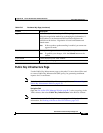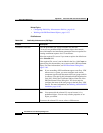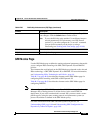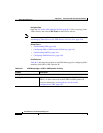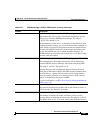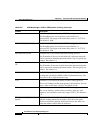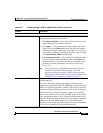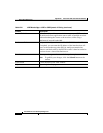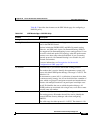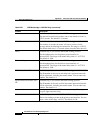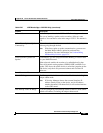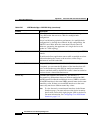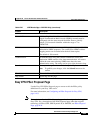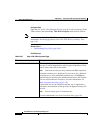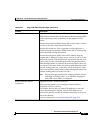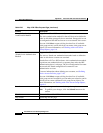
B-65
User Guide for Cisco Security Manager 3.0.1
OL-8214-02
Appendix B Site-to-Site VPN User Interface Reference
Site to Site VPN Policies
Table B-22 describes the elements on the GRE Modes page for configuring a
DMVPN policy.
Table B-22 GRE Modes Page > DMVPN Policy
Element Description
Routing Parameters Tab
Routing Protocol Select the required dynamic routing protocol, or static route, to be
used in the DMVPN tunnel.
Options include the EIGRP, OSPF, and RIPv2 dynamic routing
protocols, and GRE static routes. On-Demand Routing (ODR) is
also supported. On-Demand Routing is not a routing protocol. It can
be used in a hub-and-spoke VPN topology when the spoke routers
connect to no other router other than the hub. If you are running
dynamic protocols, On-Demand Routing is not suitable for your
network environment.
For more information, see Prerequisites for Successful
Configuration of GRE, page 9-87.
AS Number Available only if you selected the EIGRP routing protocol.
The number that is used to identify the autonomous system (AS)
area to which the EIGRP packet belongs. The range is 1-65535. The
default is 110.
An autonomous system (AS) is a collection of networks that share
a common routing strategy. An AS can be divided into a number of
areas, which are groups of contiguous networks and attached hosts.
Routers with multiple interfaces can participate in multiple areas.
An AS ID identifies the area to which the packet belongs. All
EIGRP packets are associated with a single area, so all devices must
have the same AS number.
Process Number Available only if you selected the OSPF routing protocol.
The routing process ID number that will be used to identify the
secured IGP that Security Manager adds when configuring
DMVPN.
The valid range for either protocol is 1-65535. The default is 110.



